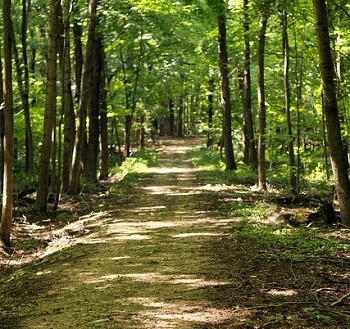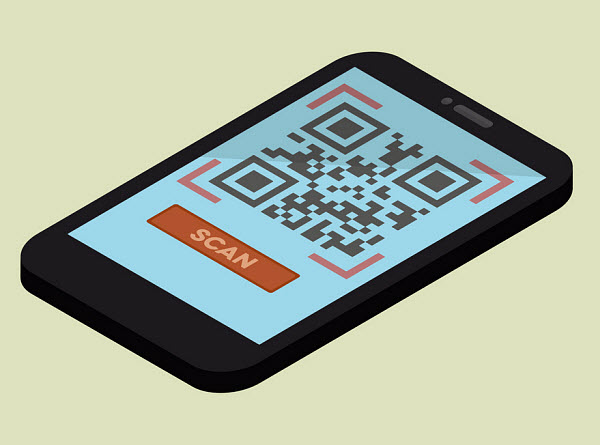For people who wonder what types of trees surround them in these green spaces, quick response codes will help.
In Murrysville, Pennsylvania, it’s becoming easier to get to know the types of trees that share their clean air, shade and gorgeous green color, as QR codes are being added to these green spaces to identify the various species.
Nature enthusiasts carrying smartphones will be able to scan the quick response codes for more information.
The QR codes are being added to the signage by the Friends of Murrysville Parks. The barcode tags have been placed onto park signs so that visitors to the area can use their smartphones to scan the codes and inform themselves about the types of trees that can be found throughout the green spaces. A scan automatically directs a user to one of the webpages hosted by the municipality and that have been created to provide information about the different types of trees that can be found throughout the parks.
At the start of the project, there are four QR codes being added to Duff Park, and five going into Townsend Park.
 This, however, will be only the start of the program. With the initial launch, the nine codes in the two parks will get things started. However, it looks as though this will be expanded into more codes and additional parks over time.
This, however, will be only the start of the program. With the initial launch, the nine codes in the two parks will get things started. However, it looks as though this will be expanded into more codes and additional parks over time.
Originally, the intention had been to build a gazebo with the municipality’s funds for Duff Park. However, the Friends of Murrysville Parks decided that it would be more appealing to launch a project that would provide tree identification.
A couple of local students were brought in by the Friends as interns and they studied the existing signage. They researched the trees and decided that adding QRcode tags would be the easiest way to update the black locust wood sign posts that are already there, hardy and rot-resistant, but that would now be able to provide far more information when scanned by smartphones.
The Friends are expecting that these QR codes will be receiving a considerable amount of use, particularly considering that Duff Park is likely the busiest of Murrysville’s eleven parks.
In Sterling Heights, Michigan, a teacher and her students have worked together to enhance education.
Sterling Heights, Michigan teacher, Christine Kincaid-Dewey, has worked with her students from the Macomb Mathematics, Science and Technology Center (MMSTC) in order to use QR codes to help to enhance the experience visitors receive when they head to the Nature Center in the city.
As a result of their efforts, the teacher and students have been recognized by the city as “Nice Neighbors”.
The “Nice Neighbor” award was presented to the group by Recreation Supervisor for the city, Mark DiSanto. Following the presentation, DiSanto explained that “Mrs. Kincaid-Dewey and her students undertook a project to bring Quick Response Code technology to the Nature Center’s many exhibits.” The aim of the project was to allow visitors to scan QR codes while at the Nature Center so they can learn more about the exhibits than would be possible to add to display signage.
The QR codes were used to automatically direct smartphone users to the information specific to each exhibit.
 Mobile device users can scan the QRcodes with any free reader app. These scanner applications are available at virtually every app store for devices on nearly every platform. Upon scanning the barcodes, the device automatically directs the user to a URL containing the relevant information.
Mobile device users can scan the QRcodes with any free reader app. These scanner applications are available at virtually every app store for devices on nearly every platform. Upon scanning the barcodes, the device automatically directs the user to a URL containing the relevant information.
DiSanto said that “Mrs. Kincaid-Dewey and her MMSTC students developed unique QR codes that provide unique and interesting facts about the exhibits being viewed,” and went on to add that “This information makes the exhibits come alive in a way that is simply not possible through traditional means.”
Another advantage to using quick response codes is that it is very easy to digitally update the information without having to change the barcode. This process is much more challenging when it comes to having to alter printed signage at an exhibit.
Kincaid-Dewey explained that her inspiration for the project she completed with her students was from previous visits she had made to the Nature Center with the MMSTC Ecology Club and their interest in giving back to it in a helpful and meaningful way.
 This, however, will be only the start of the program. With the initial launch, the nine codes in the two parks will get things started. However, it looks as though this will be expanded into more codes and additional parks over time.
This, however, will be only the start of the program. With the initial launch, the nine codes in the two parks will get things started. However, it looks as though this will be expanded into more codes and additional parks over time.
 Mobile device users can scan the QRcodes with any free reader app. These scanner applications are available at virtually every app store for devices on nearly every platform. Upon scanning the barcodes, the device automatically directs the user to a URL containing the relevant information.
Mobile device users can scan the QRcodes with any free reader app. These scanner applications are available at virtually every app store for devices on nearly every platform. Upon scanning the barcodes, the device automatically directs the user to a URL containing the relevant information.